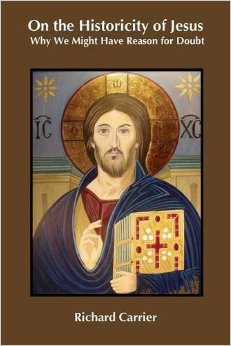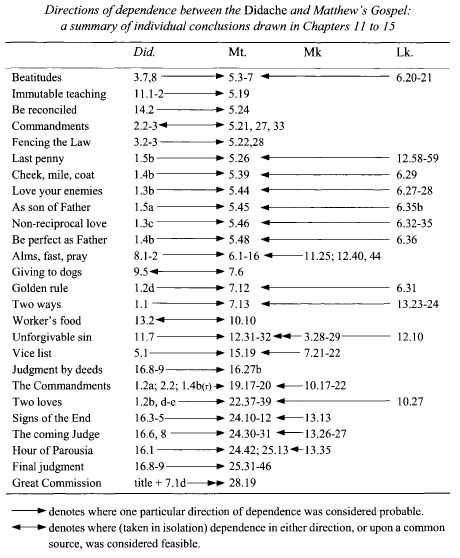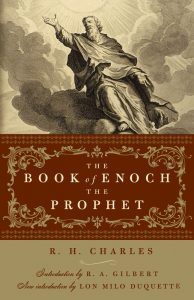The focus of my response will center on Carrier’s
- claim that a pre-Christian angel named Jesus existed,
- his understanding of Jesus as a non-human and celestial figure within the Pauline corpus,
- his argument that Paul understood Jesus to be crucified by demons and not by earthly forces,
- his claim that James, the brother of the Lord, was not a relative of Jesus but just a generic Christian within the Jerusalem community,
- his assertion that the Gospels represent Homeric myths,
- and his employment of the Rank-Raglan heroic arche-type as a means of comparison.
(Gullotta, p. 325. my formatting/numbering for quick reference)
Posts so far:
- Daniel Gullotta’s Review of Richard Carrier’s On the Historicity of Jesus (2017-12-13)
- Gullotta’s Review of Carrier’s OHJ: A Brief Comment
- How Bayes’ Theorem Proves the Resurrection (Gullotta on Carrier once more)
- What’s the Matter with Biblical Scholarship? Part 3 (Tim Widowfield)
- Who Depoliticized Early Christianity? (Tim Widowfield)
- Gullotta, Homer, and the Training of a Correct Scholar
- The Function of the Term: “Born of a Woman” (Tim Widowfield)
- Daniel Gullotta’s Review of Richard Carrier’s “On the Historicity of Jesus”: that “born of a woman” passage (again)
- Continuing Gullotta’s Review of Carrier’s On the Historicity of Jesus
- Gullotta’s review of Carrier’s argument #2: relating to Jesus’ birth and humanity
Daniel Gullotta takes up Carrier’s argument that Jesus was crucified “in heavenly places” beginning as follows:
Rather than believing that Jesus was crucified at the hands of Romans, Carrier claims that Paul and the first Christians believed that ‘Jesus was celestially crucified by the ‘rulers of this world’, by which Carrier means ‘Satan and his demons.’ Most of Carrier’s evidence relies heavily upon 1 Cor 2.8 and Paul’s reference to ‘the rulers of this age’. According to Carrier, these rulers ‘cannot mean the Jewish elite, or the Romans, or any human authority’ but rather ‘Satan and his demons’. But this assessment is inaccurate because it places an artificial distinction between earthly and other-earthly powers that does not exist in Second Temple texts, particularly of the apocalyptic variety.
(Gullotta, p. 331)
Rather than point out the reasons Carrier gives for his interpretation of 1 Cor 2.8 Gullotta dwells entirely on opposing arguments without at any point indicating Carrier’s responses to any of these. Gullotta’s “rebuttals” are in fact answered by Carrier although Gullotta appears to have overlooked that fact. For example, Gullotta in the above quotation says Paul cannot mean the Jewish elite or the Romans quite ignoring Carrier’s point that
This cannot mean just Pontius Pilate and the Sanhedrin. This is everyone in power: they killed Jesus, and did so only because they were kept from knowing their doing so would save the human race.
(Carrier p. 564)
A review is entitled to disagree with Carrier’s argument but he is not entitled to a criticism that gives readers the impression that Carrier’s argument is nonexistent.
Moreover, Gullotta’s responses are not based on a comprehensive awareness of the range of arguments that have been raised in the history of the interpretation of 1 Cor 2:8 but dwell exclusively on one interpretation only, as if there is no scholarly debate. Since I have only recently explored the extent of the scholarly arguments, past and more recent, both for and against Gullotta’s position, I am reluctant to repeat them here. Anyone interested in the question and the range of arguments, including where Gullotta’s fall short, can access any of those posts. It is fine for Gullotta to disagree with any of them but it is not appropriate to write a review as if Carrier’s position finds no support among specialists in the question.
- Are the “Rulers of the Age” in 1 Cor. 2:6-8 Human or Spiritual? – the sea change Who Killed Christ? Human rulers and/or angelic rulers. Addressing 1 Cor 2:6-8.
- Who Crucified Jesus – Men or Demons? Continuing Miller’s Study of 1 Cor 2:6-8
- A Crucified Messiah Was Not an Offensive Scandal to Jews (with a postscript on evangelical language among scholars)
- Seven problems for the view that Paul’s “rulers of this age” were human authorities
- What they used to say about Paul’s “rulers of this age” who crucified the “lord of glory”
- 5. More older arguments for Paul’s “rulers of this age” being spirit powers
- Once more on the “Spiritual Rulers” in Paul’s Cosmic Drama
- Paul’s “Rulers of this Age” — Conclusion (Part ?)
Certainly there is no doubt that demonic powers were believed to influence the actions of earthly authorities. But whether that is the point Paul is expressing in 1 Cor 2:8 is another question.
One is free to argue that Paul did believe that Jesus was crucified on earth but one cannot base that argument on a passage whose meaning is disputed among one’s peers without at least acknowledging that dispute that potentially favours Carrier’s interpretation.
Once again, I suspect Paul may well have understood the crucifixion to have been on earth, yet that position does not contradict the view that in 1 Cor 2:8 Paul says it was the demons were responsible entirely for the crucifixion of Jesus. As addressed in the above posts we see indications that even the evangelists believed that human agents were mere puppets whose strings were being pulled by Satan and demonic forces (as per the Gospels of Mark, Luke and John). (In this respect I remain less certain about Carrier’s and Doherty’s mythicist view of the necessity of a crucifixion in the lower heavens.)
Gullotta concludes his “rebuttal” of Carrier’s point by a long non sequitur listing second and third century references to earthly powers crucifying Jesus and comments:
Given our sources concerning Jesus’ death and knowledge about his executed contemporaries, the reality of a crucified Jesus as another failed messianic pretender from Palestine is remarkably more likely than a demonic crucifixion in outer space.
(Gullotta, p. 334)
Gullotta fails to notice the circularity of his appeal “other failed messianic pretenders” but what is particularly ironic is his appeal to probability. Carrier’s entire method is to establish relative probabilities of each possible explanation for the evidence against the full range of background knowledge. Gullotta typifies the flawed approach Carrier is attempting to address: the habit of appealing only to a narrow range of background information, those few details that support the conventional wisdom, and to fail to balance the probability of the historicist interpretation against arguments for the alternative probability. Gullotta has unfortunately simply swept aside the arguments and background information that he has just read in favour of the mythicist hypothesis as if the relevant pages were blank text. One must infer that Carrier’s fault is disagreeing with the consensus.
More forgivable given Gullotta’s early days as a scholar is his undermining the strength of his review by indicating his ignorance of the range of interpretations among his peers on the Corinthians passage about the rulers of this age crucifying the lord of glory. But where were his peer reviewers whose job surely it was to prevent the publication of such an oversight?
Next: argument #4







